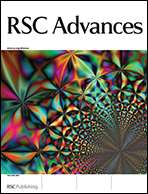Application of low frequency ultrasound to stimulate the bio-activity of activated sludge for use as an inoculum in enhanced hydrogen production
Abstract
In order to increase hydrogen yield and shorten the lag time, low frequency ultrasonic (LFU) pretreatment was applied to stimulate the bio-activity of the seed bacteria, using waste activated sludge as the inoculum. A pretreated, sterilized sludge sample was seeded as the substrate for bio-hydrogen production. A Unisense microsensor multimeter with a hydrogen microelectrode was employed to examine the hydrogenase activities at different ultrasonic densities and exposure times. The optimum conditions were achieved at an ultrasonic density of 125 W L−1 and a reaction time of 10 s. A maximum hydrogen yield of 13.03 mL H2/g TS was obtained by LFU pretreatment under these optimal conditions, which was 18% higher than that obtained when seeding the raw sludge sample. To gain a better understanding of the end product distribution, three-dimensional excitation–emission matrix (3D-EEM) fluorescence spectroscopy was performed to characterize the dissolved organic matter (DOM) and extracellular polymeric substances (EPS) in the sludge samples during the anaerobic fermentation process. Hydrogen production from NADH/NAD+ conversion was also proved by EEM.


 Please wait while we load your content...
Please wait while we load your content...